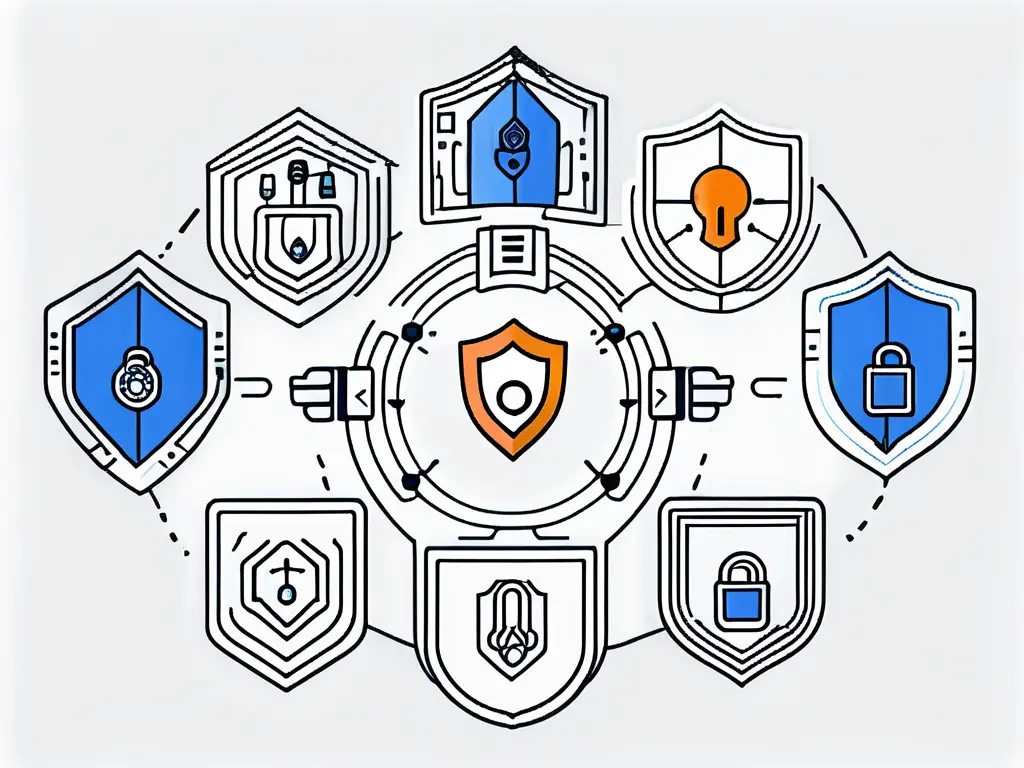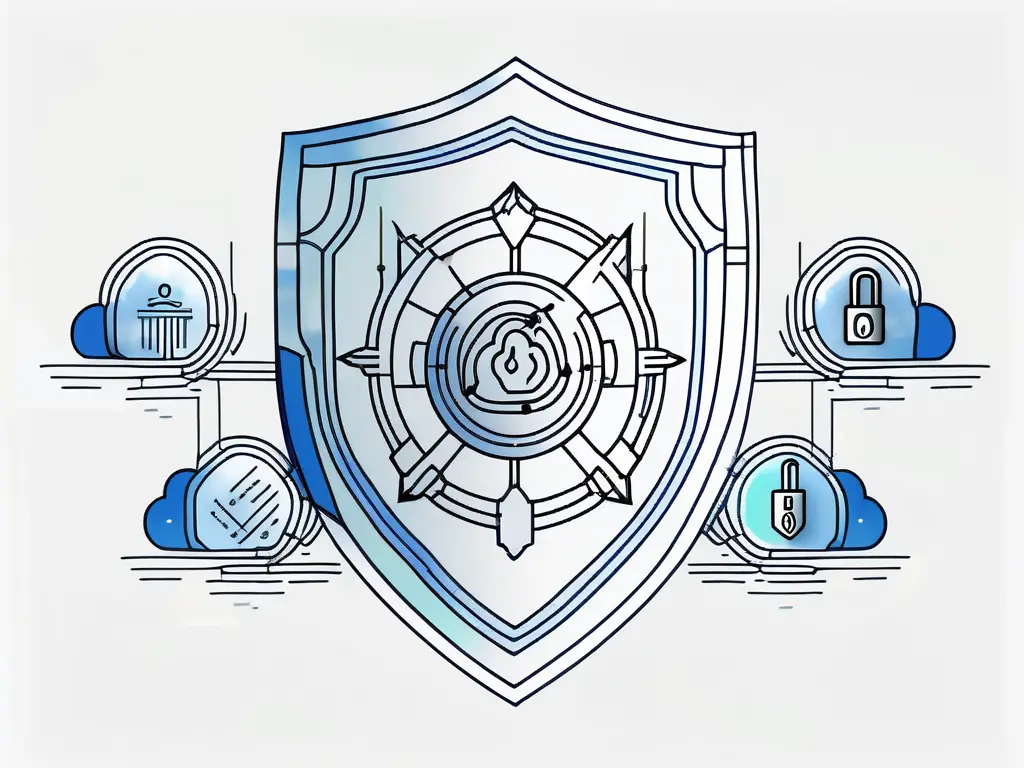In cybersecurity, staying one step ahead of threats is crucial. One way to do this is by utilizing indicators to identify and predict potential attacks. Two commonly used approaches are IOC and IOA, which are Indicators of Compromise and Indicators of Attack, respectively. Although they may sound similar, there are significant differences between IOC and IOA. In this article, we will delve into the intricacies of these two approaches, explore their roles in cybersecurity, compare their strengths and weaknesses, and discuss how organizations can best choose their specific needs.
Understanding IOC and IOA in Cybersecurity
The first step in understanding the differences between IOC and IOA is grasping their definitions and functionalities. While both approaches play pivotal roles in identifying and mitigating cyber threats, they operate using distinct indicators.
When delving deeper into cybersecurity, it’s essential to recognize that the effectiveness of IOC and IOA lies in their ability to complement each other. While IOC focuses on post-attack detection, IOA takes a proactive stance in identifying pre-attack indicators. This dual approach enhances an organization’s overall cybersecurity posture, providing a comprehensive defense mechanism against various cyber threats.
Defining IOC: Indicators of Compromise
IOC focuses on identifying signs that an attack has already occurred or is currently underway. These signs, known as Indicators of Compromise, can include anything from unusual network traffic patterns to malicious files on a system. Organizations can swiftly respond to an ongoing attack and prevent further damage by detecting these indicators.
IOC not only aids in incident response but also serves as a valuable tool for forensic analysis. By meticulously examining the identified indicators, cybersecurity professionals can gain insights into the nature of the attack, the tactics employed by threat actors, and the extent of the breach. This detailed analysis is crucial for strengthening defenses and fortifying systems against future cyber threats.
Defining IOA: Indicators of Attack
IOA, on the other hand, takes a proactive approach by identifying the indicators that precede an attack. These indicators, called Indicators of Attack, can include suspicious behavior such as multiple failed login attempts or the initiation of unauthorized network connections. By detecting these early warning signs, organizations can take preemptive measures to thwart potential attacks before they do any harm.
IOA is vital in threat intelligence gathering and modeling. By continuously monitoring and analyzing attack indicators, organizations can stay one step ahead of cyber adversaries, anticipate their tactics, and proactively strengthen their defenses. This strategic approach enhances cybersecurity resilience and fosters a culture of proactive risk management within an organization.
The Role of IOC in Cybersecurity
In cybersecurity, Indicators of Compromise (IOCs) play a crucial role in identifying and responding to potential threats. These IOCs can range from specific IP addresses and domain names to file hashes and patterns of suspicious behavior. By monitoring these indicators, cybersecurity professionals can proactively detect malicious activities within their networks and systems.
How IOC Helps Identify Threats
IOC is a valuable tool for cybersecurity professionals, allowing them to detect and mitigate attacks quickly. By identifying indicators that point to a compromise, organizations can promptly investigate the source of the breach, contain the attack, and restore the affected systems to a secure state. This agility is crucial in minimizing damage and preventing further infiltration.
IOCs can also be shared among organizations and security communities, enabling a collective defense approach. By collaborating and exchanging IOCs, entities can strengthen their cybersecurity posture and more effectively stay ahead of emerging threats.
Limitations of IOC in Cybersecurity
While IOC is an effective approach in certain scenarios, it also has limitations. One of the primary challenges with IOC is the reactive nature of its indicators. By relying solely on indicators of compromise, organizations may only become aware of an attack after it has already occurred. This can leave them vulnerable to advanced threats that bypass traditional indicators, potentially resulting in severe consequences.
The sheer volume of IOCs generated during security monitoring can sometimes overwhelm cybersecurity teams, leading to alert fatigue and making it difficult to distinguish between genuine threats and false positives. This highlights the importance of fine-tuning IOC implementation to prioritize relevant and actionable intelligence for effective incident response.
The Role of IOA in Cybersecurity
When it comes to cybersecurity, Indicators of Attack (IOA) play a crucial role in fortifying an organization’s defenses against potential threats. IOA acts as a proactive measure, focusing on early detection and predicting attacks by analyzing indicators that precede actual compromise. By identifying patterns of suspicious behavior, IOA enables organizations to anticipate potential threats and take preemptive measures to bolster their security posture.
How IOA Predicts Potential Threats
IOA’s predictive capabilities empower organizations to stay one step ahead of cyber threats. By closely monitoring and analyzing various indicators, such as unusual network traffic, unauthorized access attempts, or anomalous system behavior, IOA helps identify potential vulnerabilities before they can be exploited by malicious actors. This proactive approach enhances the organization’s threat detection capabilities and allows for the effective implementation of targeted security measures to mitigate risks.
IOA is a valuable threat intelligence tool, providing security teams with actionable insights to strengthen their incident response strategies. By leveraging IOA to predict and prevent cyber threats, organizations can significantly reduce the likelihood of successful attacks and minimize the potential impact on their operations and data.
Limitations of IOA in Cybersecurity
While IOA offers a proactive and forward-thinking approach to cybersecurity, it has limitations. One of the primary challenges organizations face with IOA is false positives. False positives occur when legitimate actions or activities are mistakenly flagged as indicators of an attack, leading to unnecessary disruptions and resource wastage.
Managing false positives effectively ensures that security teams can focus on genuine threats without being inundated with false alarms. Striking the right balance between minimizing false positives and accurately identifying indicators of attack is crucial for successfully implementing IOA within an organization’s cybersecurity framework.
Comparing IOC and IOA Approaches

When delving deeper into the realm of cybersecurity strategies, it is crucial to understand the nuances that differentiate various approaches. In the case of Indicators of Compromise (IOC) and Indicators of Attack (IOA), these distinctions can significantly impact an organization’s ability to detect and respond to threats effectively.
Similarities Between IOC and IOA
IOC and IOA share a common goal: to enhance an organization’s cybersecurity posture. Both approaches rely on analyzing indicators to detect and prevent attacks. Additionally, IOC and IOA contribute to incident response and forensic investigations, allowing organizations to understand the scope and impact of breaches.
The convergence of IOC and IOA methodologies underscores the importance of a holistic approach to cybersecurity. By combining the strengths of both approaches, organizations can create a more robust defense mechanism that addresses a wider range of threats.
Key Differences Between IOC and IOA
While there are similarities, IOC and IOA differ greatly in their focus and timing. IOC primarily focuses on identifying signs of an ongoing or past attack, while IOA leans towards detecting indicators that precede an attack. This distinction highlights the contrasting proactive and reactive natures of the two approaches. Understanding these differences is essential in making an informed decision regarding which approach to adopt for cybersecurity measures.
The evolution of IOC and IOA frameworks continues to shape the cybersecurity landscape, with new methodologies and technologies constantly being developed to enhance threat detection and response capabilities. Staying abreast of these advancements is vital for organizations seeking to stay ahead of cyber threats and safeguard their digital assets effectively.
Choosing Between IOC and IOA for Your Organization

When it comes to choosing between IOC and IOA, organizations should consider a multitude of factors to ensure they select the most effective cybersecurity strategy. Evaluating their cybersecurity infrastructure is crucial, as it provides insights into the tools and technologies already in place to support either approach. Additionally, understanding the nature of their data and systems is essential, as sensitive information may require a more proactive defense mechanism.
Factors to Consider When Choosing Between IOC and IOA
Furthermore, organizations must assess risk tolerance levels and budgetary constraints when deciding between IOC and IOA. While IOC may be more suitable for organizations with a reactive cybersecurity posture, IOA could be preferred by those seeking a proactive threat detection mechanism. Organizations can enhance their overall security posture by aligning each approach with their specific requirements and objectives.
Balancing IOC and IOA for Optimal Cybersecurity
While IOC and IOA each have their strengths and weaknesses, organizations may discover that a harmonious blend of both approaches offers a comprehensive cybersecurity strategy. Leveraging the incident response capabilities of IOC alongside the proactive threat detection features of IOA can create a robust defense mechanism against evolving cyber threats. This balanced approach maximizes the organization’s defenses and minimizes the potential risks associated with sophisticated attacks.
The Future of IOC and IOA in Cybersecurity
As the digital landscape expands and becomes more interconnected, the importance of Indicators of Compromise (IOCs) and Indicators of Attack (IOAs) in cybersecurity cannot be overstated. These vital tools help organizations identify potential security incidents and proactively respond to threats before they escalate into full-blown breaches.
Emerging Trends in IOC and IOA
One of the emerging trends in IOC and IOA is the incorporation of artificial intelligence and machine learning algorithms. These technologies can enhance both approaches’ accuracy and efficiency by enabling faster and more accurate detection of indicators. Additionally, integrating threat intelligence sharing platforms may allow organizations to benefit from collective knowledge, further bolstering the effectiveness of both IOC and IOA.
The evolution of IOC and IOA is also influenced by the increasing use of automation and orchestration in cybersecurity operations. Organizations can significantly reduce the time to detect and mitigate threats by automating the detection and response processes, thereby enhancing their overall security posture.
How Advances in Technology May Impact IOC and IOA
Technological advances, such as the proliferation of connected devices and the rise of the Internet of Things, present new challenges and opportunities for both IOC and IOA. With an increasing attack surface and a wider variety of potential indicators, cybersecurity professionals must effectively adapt their approaches to address these evolving threats. Furthermore, as attackers become more sophisticated, the need for advanced IOC and IOA techniques will continue to grow to stay ahead of the malicious actors.
Additionally, the advent of quantum computing poses both a threat and an opportunity for IOC and IOA. While quantum computing has the potential to revolutionize cybersecurity with its unparalleled processing power, it also introduces new vulnerabilities that malicious actors could exploit. As organizations navigate this new technological frontier, they must stay vigilant and continuously innovate their IOC and IOA strategies to protect against emerging threats.
Conclusion
Cybersecurity is a complex and ever-evolving field, and understanding the differences between IOC and IOA is vital for organizations seeking to protect their sensitive data and systems. While IOC focuses on identifying indicators of compromise, IOA takes a proactive stance by detecting indicators of attack. By evaluating their specific needs and considering the strengths and limitations of each approach, organizations can make an informed decision on which approach, or combination thereof, will best suit their cybersecurity objectives. Additionally, staying abreast of emerging trends and technological advancements will ensure that organizations can adapt their strategies and stay ahead of the ever-evolving threat landscape.
As you navigate the intricate differences between IOC and IOA in cybersecurity, the importance of a knowledgeable and experienced partner becomes clear. Blue Goat Cyber, a Veteran-Owned leader in the cybersecurity field, offers the expertise and tailored B2B services you need to stay ahead of cyber threats. Our commitment to excellence in medical device cybersecurity, penetration testing, and compliance ensures that your business is protected and prepared to thrive in today’s digital landscape. Don’t let the complexity of cybersecurity deter you from achieving success. Contact us today for cybersecurity help and take the first step towards a secure and confident future with Blue Goat Cyber.
